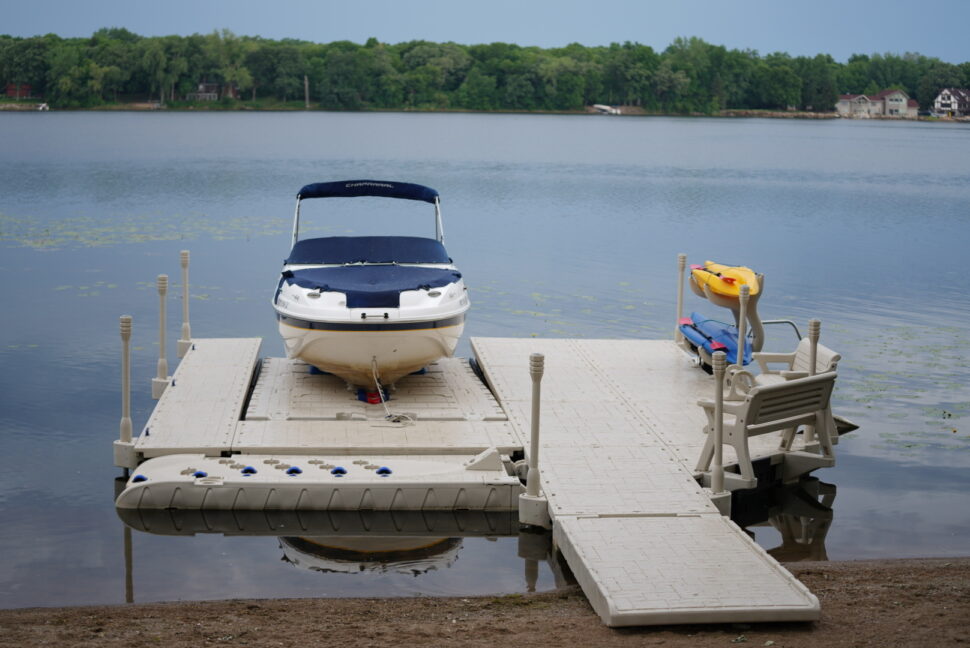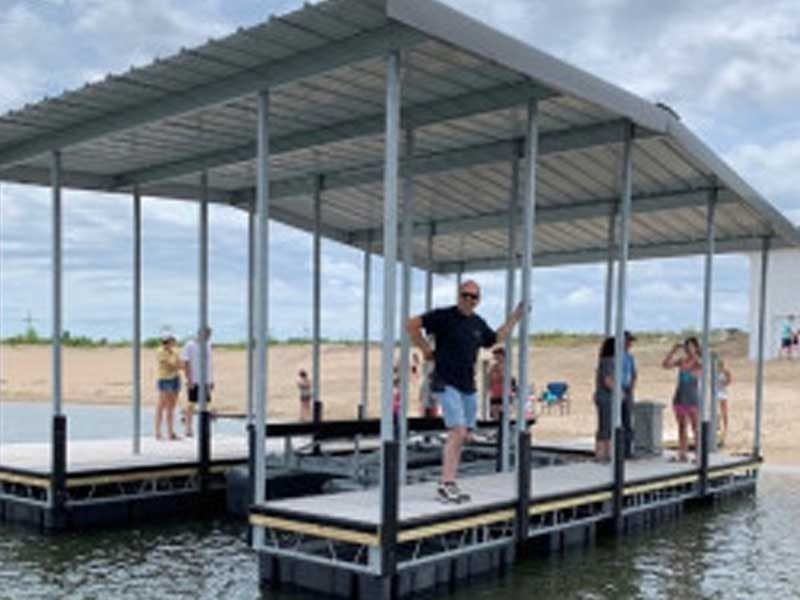Enhance Your Water Experience with Custom Floating Docks Designed for Your Way of living
Enhance Your Water Experience with Custom Floating Docks Designed for Your Way of living
Blog Article
The Ultimate Guide to Picking the very best Floating Docks
Choosing the optimal floating dock calls for a detailed understanding of different aspects that influence both performance and durability. Aspects such as dock types, materials, and essential features considerably affect your decision-making procedure.
Recognizing Floating Dock Types
When picking a floating dock, it is important to understand the numerous types available, as each offers distinctive purposes and applications. Floating docks mostly come under 3 groups: modular, stationary, and pontoon docks.
Modular docks are composed of private areas that can be easily put together or reconfigured, making them optimal for changing water levels and varied usages, such as leisure activities or industrial procedures. Their adaptability permits customization based upon specific needs.

Pontoon docks are identified by their buoyant framework, typically made up of several pontoons that give stability and support. They are especially fit for larger vessels and are typically utilized in marinas or for waterside residential or commercial properties. Comprehending these types aids in selecting the most appropriate floating dock to fulfill specific needs, guaranteeing optimal performance and safety and security.
Secret Materials for Resilience
Selecting the ideal products for floating docks significantly influences their sturdiness and durability. The most common products consist of timber, plastic, steel, and composite materials, each offering distinct advantages and constraints.
Timber, commonly favored for its aesthetic allure, requires routine maintenance to stand up to wetness and decay. Pressure-treated lumber can boost resistance to rot, yet it may still be prone to insects and weathering.

Plastic docks, made from high-density polyethylene (HDPE), are resistant to corrosion, UV radiation, and impact, making them a prominent selection for seaside atmospheres. Their light-weight nature also promotes simple installment and moving.
Steel docks, usually constructed from light weight aluminum or galvanized steel, supply remarkable stamina and longevity. They are resistant to deterioration, especially when treated, yet may need additional insulation to stop heat buildup in hot environments.
Composite materials, integrating wood fibers and plastics, supply the benefits of both timber and plastic, standing up to wetness and fading while calling for very little maintenance. - floating dock company
Eventually, the option of products should straighten with ecological problems, meant use, and maintenance choices to ensure the floating dock remains useful and visually pleasing gradually.
Important Attributes to Consider
While the selection of products is essential, taking into consideration important functions for floating docks is equally vital to make certain ideal efficiency and customer complete satisfaction. One vital attribute to analyze is the dock's buoyancy ability, which figures out just how much weight it can sustain without submerging. floating dock company. This is essential for fitting watercrafts, personal watercraft, and also leisure tasks
In addition, transportability is a considerable factor to consider. Relying on your demands, you might desire a dock that is simple to transfer and take apart, specifically if you plan to transfer it seasonally. Stability is another necessary feature; a properly designed floating dock must decrease motion created by wind and water currents, giving a secure platform for users.
Safety features, such as non-slip surfaces and rounded sides, are likewise critical to stop accidents, especially in damp problems. Additionally, consider the accessibility of devices, such as cleats, bumpers, and ladders, which can improve the performance of your dock.
Setup and Upkeep Tips
Setting up and keeping a drifting dock calls for cautious planning and interest to detail to ensure its longevity and optimal performance. Begin by selecting a suitable area that decreases exposure to solid currents and waves, which can create wear and tear. Make certain that the water deepness suffices for the dock's height and that it is secured securely to avoid activity.
Throughout setup, follow the my response manufacturer's standards closely, as incorrect assembly can endanger security. Use top quality products resistant to rust, such as aluminum or dealt with timber, to enhance durability. Routinely examine all components, including drifts, ports, and securing systems, for indicators of damages or wear.
Upkeep is crucial for extending the life of your dock. Tidy the surface areas occasionally to stop algae build-up and check for any type of loose installations that may need firm. Ensure they continue to be totally free and undamaged from slits if your dock uses flotation tools. Furthermore, think about applying safety finishes to wood elements to lower weathering impacts. By sticking to these installation his response and maintenance pointers, you can appreciate a practical and dependable floating dock for several years ahead.
Budgeting for Your Dock
Budgeting for your dock is a critical action that can dramatically impact your general fulfillment and financial investment in a beachfront property. Developing a clear budget plan assists you browse the numerous alternatives readily available and ensures you make educated decisions that straighten with your economic abilities.
Begin by figuring out the size and style of the dock you require, as these aspects will significantly influence the price. Floating docks can differ substantially in price, relying on products, buoyancy, and features like accessories and ramps. Research study various producers and suppliers to compare costs and recognize the marketplace worth.
In enhancement to preliminary costs, consider ongoing expenditures such as maintenance, insurance coverage, and possible repair work. Allot funds for these persisting expenses to stay clear of shocks down the line. It's additionally sensible to allocate any required permits or assessments, which may be needed by regional regulations.
Finally, bear in mind the prospective roi. A well-planned dock can improve your property's value and allure, giving a favorable financial effect in the long term. By budgeting successfully, you can guarantee that your dock fulfills your needs without jeopardizing your monetary stability.
Final Thought
In conclusion, selecting the ideal floating dock requires a thorough examination of numerous aspects, including dock kinds, products, necessary features, and setup processes. Cautious factor to consider of financial restraints will certainly further ensure a sound financial investment.

While the selection of materials is critical, taking into consideration essential functions for floating docks is just as essential to guarantee ideal efficiency and look at more info customer contentment.Setting up and keeping a drifting dock requires careful preparation and attention to detail to ensure its longevity and optimal performance. Floating docks can differ substantially in cost, depending on products, buoyancy, and features like ramps and devices.In verdict, selecting the perfect floating dock demands an extensive examination of different elements, consisting of dock kinds, products, essential attributes, and installation processes.
Report this page